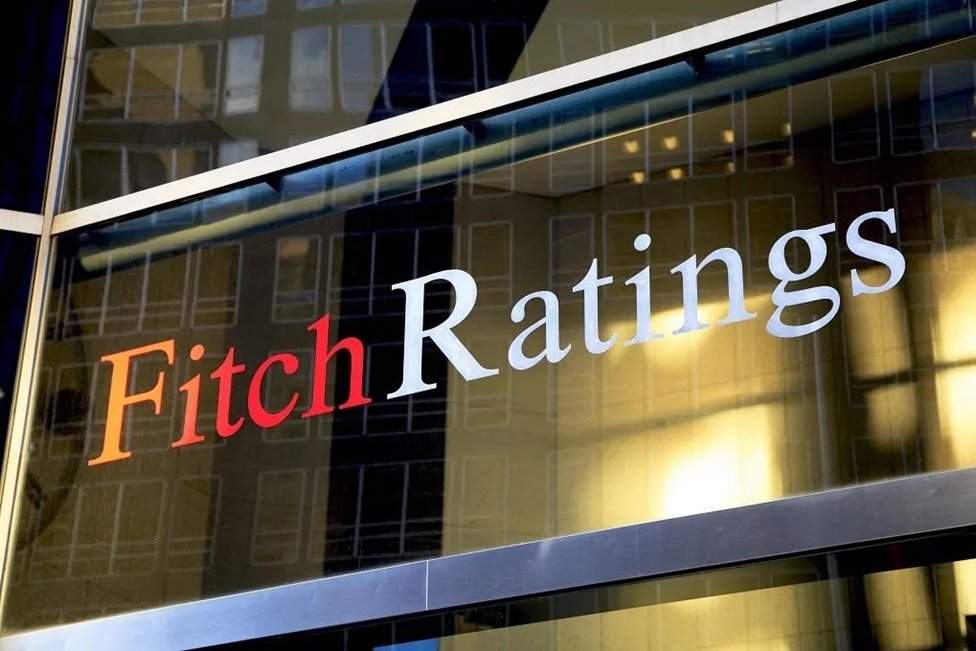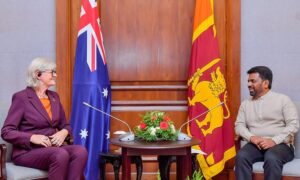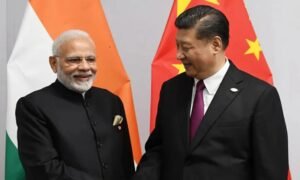
Fitch Ratings has affirmed Sri Lanka’s Long-Term Foreign-Currency Issuer Default Rating (IDR) at ‘RD’ (Restricted Default) and Long-Term Local-Currency IDR at ‘CCC-‘. Fitch typically does not assign Outlooks to issuers with a rating of ‘CCC+’ or below.
A full list of rating actions is at the end of this rating action commentary.
Key Rating Drivers
Restructuring Negotiations Ongoing: The sovereign remains in default on its foreign-currency obligations, while restructuring negotiations are ongoing with Sri Lanka’s private external creditors. The authorities’ recent announcement that a preliminary debt restructuring agreement has been reached, in principle, with members of the steering committee of the Ad Hoc Group of Bondholders (representing foreign holders of Sri Lanka’s international sovereign bonds) and China Development Bank (A+/Negative) suggests progress is being made.
The agreement comes after the 12 April 2022 announcement suspending debt servicing on several categories of external debt, including bonds issued in international capital markets, foreign currency-denominated loans and credit facilities with commercial banks and institutional lenders. The Long-Term Foreign-Currency IDR has been on ‘RD’ since May 2022, once the grace period expired.
Policy Uncertainty Following Elections: Sri Lanka’s September 2024 Presidential election was won by one of the opposition leaders. Fitch believes the result add uncertainty to the country’s policy direction and could lead to a delay in the completion of the foreign-currency debt restructuring or renegotiation of the IMF programme. The upcoming 2025 budget, to be adopted by November 2024, could offer clarity on the new government’s policies.
Local–Currency Debt Exchange Complete: Sri Lanka completed the local-currency portion of its domestic debt optimisation in September 2023. This followed the exchange of the Central Bank of Sri Lanka’s treasury bills and provisional advance into new treasury bonds and bills. This led us to upgrade the Local-Currency IDR to ‘CCC-‘. The rating is being affirmed at this level.
Government Debt to Stay High:The IMF forecasts Sri Lanka’s gross general government debt/GDP ratio to decline only gradually to about 103% of GDP by 2028, from about 116% in 2022. This forecast incorporates a local- and foreign-currency debt restructuring scenario. However, this level of debt would still be elevated, even after the restructuring.
External Metrics Improving: Foreign-currency (FX) reserves have been improving, with gross FX reserves reaching around USD6.0 billion in August 2024, against USD4.4 billion at end-2023, partly due to the suspension of external debt service. Other supporting factors include an uptick in tourism and overseas worker remittances. The current account was in a surplus in 2023 and we expect a surplus in 2024. The sovereign, however, remains dependent on official financing sources without access to international capital markets.
Stronger Revenue Generation: Weak IMF program implementation, in particular of fiscal measures, remains a risk to achieving debt sustainability. Sri Lanka has a weak longer-term revenue raising record, but the authorities have implemented several major tax measures since May 2022 to boost revenue collection and achieve debt sustainability. These included raising the corporate income tax rate, hikes to the value-added tax rate and raising fuel excise taxes. This saw revenue collection improve by 42% yoy in 1H24.
Additional fiscal measures in the pipeline include an increase in the corporate income tax to 45%, from 40%, for certain types of economic activity, an additional value-added tax rate on the supply of digital services, further tax administration reforms as well as limiting tax exemptions and making them more transparent.
Economy on a Recovering Trend: We expect economic growth to recover to 3.9% in 2024 and average at 3.6% over 2025-2026. Real GDP growth, in seasonally adjusted terms, recovered to about 5.0% yoy in 1H24 after contracting by 7.0% during 1H23, driven by a pick-up in industrial growth to 11.3% after a contraction of about 18.0% in 1H23. Services also recovered by about 2.7% during the same period after a contraction in 1H23.
Inflation in Check:We expect further easing of monetary policy over 2024-2026, after the Central Bank of Sri Lanka reduced the standing deposit facility rate by a cumulative 725bp since June 2023, as underlying inflationary pressure remains muted.Inflation was about 0.6% in August 2024, in seasonally adjusted terms, and has been in the single digits for over a year. A surge in inflation, peaking in September 2022 at around 67%, was successfully curtailed by the central bank.
Banking Sector Stabilising:The banking sector’snon-performing loans remain high, partly owing to the economic stress associated with the sovereign default. However, the domestic bank operating environment continues to show signs of stabilisation, in line with improved economic indicators. This supports the recovery in banks’ operational flexibility. The completion of the local-currency portion of Sri Lanka’s domestic debt optimisation was a major step towards reducing the impact of the sovereign’s debt restructuring on the banking sector.
ESG – Governance: Sri Lanka has an ESG Relevance Score of ‘5’ for Political Stability and Rights as well as for the Rule of Law, Institutional and Regulatory Quality and Control of Corruption. These scores reflect the high weight that the World Bank Governance Indicators (WBGI) have in our proprietary Sovereign Rating Model (SRM). Sri Lanka has a medium WBGI ranking in the 36th percentile, reflecting a recent record of peaceful political transitions, a moderate level of rights for participation in the political process, moderate institutional capacity, established rule of law and a moderate level of corruption.
ESG – Creditor Rights: Sri Lanka has an ESG Relevance Score of ‘5’ for Creditor Rights, as willingness to service and repay debt is highly relevant to the rating and is a key rating driver with a high weight. The affirmation of Sri Lanka’s Long-Term Foreign-Currency IDR at ‘RD’ reflects a default event.
RATING SENSITIVITIES
Factors that Could, Individually or Collectively, Lead to Negative Rating Action/Downgrade
External Finances: The Long-Term Foreign-Currency IDR is at the lowest level and cannot be downgraded.
Public Finances: The Local-Currency IDR would be downgraded if further restructuring or a default on local-currency debt becomes probable due to an unsustainable debt burden or inability to raise revenue.
Factors that Could, Individually or Collectively, Lead to Positive Rating Action/Upgrade
External Finances: Completion of the foreign-currency commercial debt restructuring that Fitch judges to have normalised the relationship with private-sector creditors would result in an upgrade of the Long-Term Foreign-Currency IDR.
Public Finances: A sustained decline in the general government debt/GDP ratio that is underpinned by the implementation of a medium-term fiscal consolidation strategy and faster economic growth.
Sovereign Rating Model (SRM) and Qualitative Overlay (QO)
Fitch’s proprietary SRM assigns Sri Lanka a score equivalent to a rating of ‘CCC+’ on the Long-Term Foreign-Currency IDR scale. In accordance with the rating criteria for ratings in the ‘CCC’ range and below, Fitch has not used the SRM or QO to explain the ratings, which are instead guided by Fitch’s rating definitions.
Fitch’s SRM is the agency’s proprietary multiple regression rating model that employs 18 variables based on three-year centred averages, including one year of forecasts, to produce a score equivalent to a Long-Term Foreign-Currency IDR. Fitch’s QO is a forward-looking qualitative framework designed to allow for adjustment to the SRM output to assign the final rating, reflecting factors within our criteria that are not fully quantifiable and/or not fully reflected in the SRM.
Country Ceiling
Sri Lanka’s Country Ceiling is ‘B-‘. For sovereigns rated ‘CCC+’ or below, Fitch assumes a starting point of ‘CCC+’ to determine the Country Ceiling.
Fitch’s Country Ceiling Model produced a starting point uplift of zero notches. Fitch applied a +1 notch qualitative adjustment under the balance of payments restrictions pillar, reflecting that the private sector has not been prevented or significantly impeded from converting local currency into foreign currency and transferring the proceeds to non-resident creditors to service debt payments. Fitch does not assign Country Ceilings below ‘CCC+’, and only assigns a Country Ceiling of ‘CCC+’ in the event that transfer and convertibility risk has materialised and is affecting the majority of economic sectors and asset classes.
REFERENCES FOR SUBSTANTIALLY MATERIAL SOURCE CITED AS KEY DRIVER OF RATING
The principal sources of information used in the analysis are described in the Applicable Criteria.
ESG Considerations
Sri Lanka has an ESG Relevance Score of ‘5’ for Political Stability and Rights, as WBGIs have the highest weight in Fitch’s SRM and are highly relevant to the rating and a key rating driver with a high weight. As Sri Lanka has a percentile rank below 50 for the respective governance indicator, this has a negative impact on the credit profile.
Sri Lanka has an ESG Relevance Score of ‘5’ for Rule of Law, Institutional & Regulatory Quality and Control of Corruption, as WBGIs have the highest weight in Fitch’s SRM and are therefore highly relevant to the rating and are a key rating driver with a high weight. As Sri Lanka has a percentile rank below 50 for the respective governance indicator, this has a negative impact on the credit profile.
Sri Lanka has an ESG Relevance Score of ‘4’ for Human Rights and Political Freedoms, as the Voice and Accountability pillar of the WBGIs is relevant to the rating and a rating driver. As Sri Lanka has a percentile rank below 50 for the respective governance indicator, this has a negative impact on the credit profile.
Sri Lanka has an ESG Relevance Score of ‘5’ for Creditor Rights, as willingness to service and repay debt is highly relevant to the rating and is a key rating driver with a high weight. Sri Lanka’s Long-Term Foreign-Currency IDR is at ‘RD’, as the sovereign is in default on its foreign-currency debt obligations.
The highest level of ESG credit relevance is a score of ‘3’, unless otherwise disclosed in this section. A score of ‘3’ means ESG issues are credit-neutral or have only a minimal credit impact on the entity, either due to their nature or the way in which they are being managed by the entity. Fitch’s ESG Relevance Scores are not inputs in the rating process; they are an observation on the relevance and materiality of ESG factors in the rating decision. For more information on Fitch’s ESG Relevance Scores, visit www.fitchratings.com/topics/esg/products#esg-relevance-scores
source: .fitchratings.com








